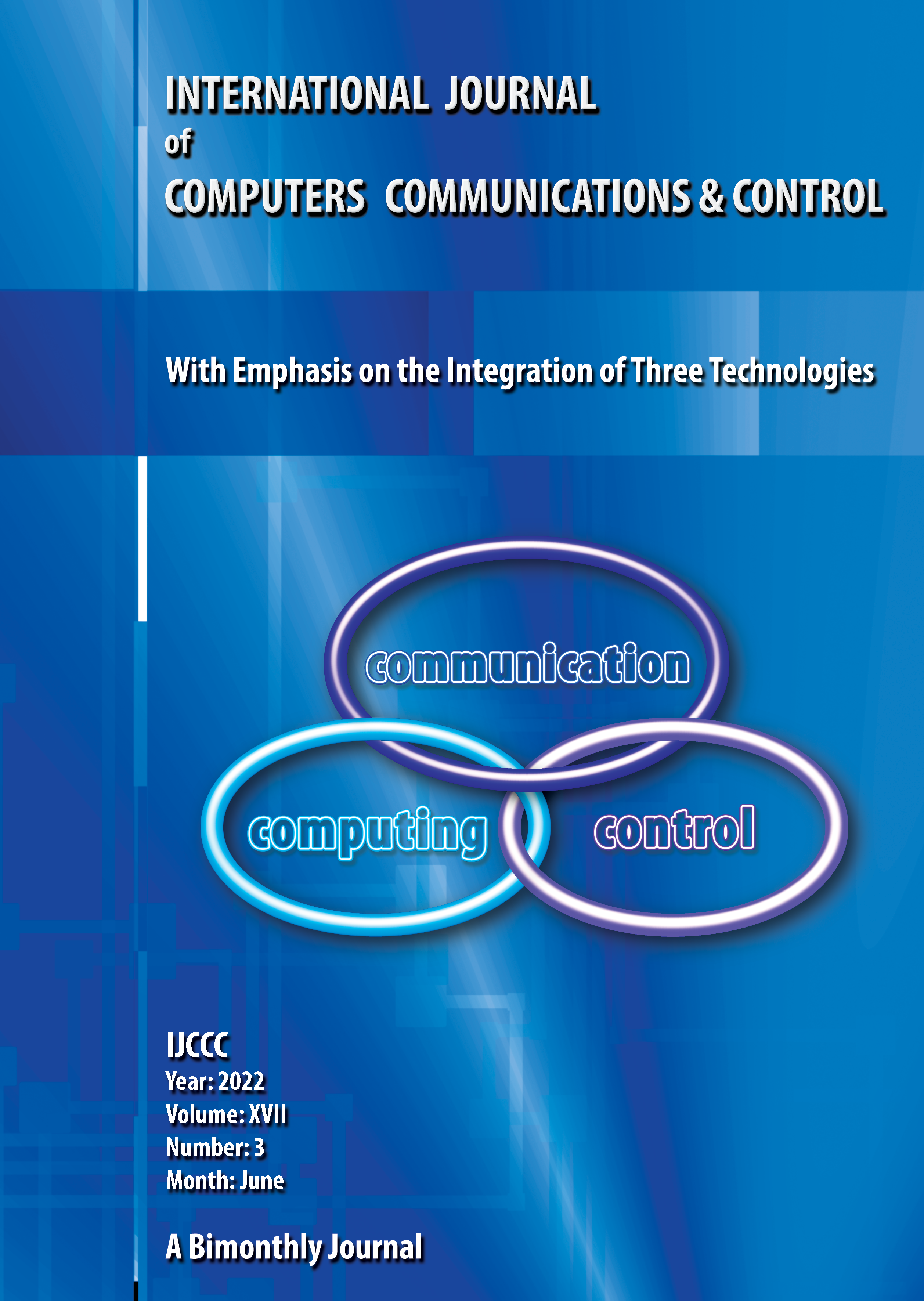Optimization of Three-dimensional Face Recognition Algorithms in Financial Identity Authentication
DOI:
https://doi.org/10.15837/ijccc.2022.3.3744Keywords:
Financial Identity Authentication, Face Recognition, Feature Extraction, Principal Component Analysis, Three-dimensional Face Recognition Algorithms, BP Neural Network, Optimization, Three-dimensional FaceAbstract
Identity authentication is one of the most basic components in the computer network world. It is the key technology of information security. It plays an important role in the protection of system and data security. Biometric recognition technology provides a reliable and convenient way for identity authentication. Compared with other biometric recognition technologies, face recognition has become a hot research topic because of its convenience, friendliness and easy acceptance. With the maturity and progress of face recognition technology, its commercial application has become more and more widespread. Internet finance, e-commerce and other asset-related areas have begun to try to use face recognition technology as a means of authentication, so people’s security needs for face recognition systems are also increasing. However, as a biometric recognition system, face recognition system still has inherent security vulnerabilities and faces security threats such as template attack and counterfeit attack. In view of this, this paper studies the application of threedimensional face recognition algorithm in the field of financial identity authentication. On the basis of feature extraction of face information using neural network algorithm, K-L transform is applied to image high-dimensional vector mapping to make face recognition clearer. Thus, the image loss can be reduced.
References
Nair K K , Helberg A , Johannes V D M . An approach to Improve the Match-on-Card Fingerprint Authentication System security[J]. 2016:119-125.
Rila L , Mitchell C J . Security Protocols for Biometrics-Based Cardholder Authentication in Smartcards[C]// Applied Cryptography and Network Security, First International Conference, ACNS 2003. Kunming, China, October 16-19, 2003, Proceedings. DBLP, 2003.
Nair S K, Dashti M T, Crispo B, et al. A Hybrid PKI-IBC Based Ephemerizer System[C]// New Approaches for Security, Privacy & Trust in Complex Environments, Ifip Tc-11 International Information Security Conference. 2008.
Shi J p. Research on fingerprint watermarking algorithm for copyright protection and identity authentication [D]. Nanjing University of Aeronautics and Astronautics, 2016.
Li Ye, Wang Yinghui, Liu Jing. 3D Face Recognition Based on Ridge Valley Feature Extraction [J]. Computer Engineering and Applications, 2011, 47 (12): 7-11.
As'Ari M A, Sheikh U U, Supriyanto E. 3D shape descriptor for object recognition based on Kinect-like depth image ☆[J]. Image & Vision Computing, 2014, 32(4):260-269.
Zhan Shu, Zhang Qixiang, Jiang Jianguo, et al. Three-dimensional face recognition based on Gabor feature kernels cooperative expression [J]. Journal of Photonics, 2013, 42 (12): 1448-1453.
Daniyal F , Nair P , Cavallaro A . Compact Signatures for 3D Face Recognition under Varying Expressions[C]// IEEE International Conference on Advanced Video & Signal Based Surveillance. IEEE, 2009.
Lu Shiwen, Da Feipeng, Deng Xing. Three-dimensional face recognition based on improved LBP [J]. Journal of Southeast University: Natural Science Edition, 2015, 45 (4): 678-682.
Karhunen J , Joutsensalo J . Representation and separation of signals using nonlinear PCA type learning[J]. Neural Networks, 1994, 7(1):113-127.
Moon H, Phillips P J. Computational and performance aspects of PCA-based face-recognition algorithms[J]. Perception, 2001, 30(3):303-21.
Bansal A, Mehta K, Arora S. Face Recognition Using PCA and LDA Algorithm[C]// Second International Conference on Advanced Computing & Communication Technologies. 2012.
Thi H A L, Nguyen M C. DCA based algorithms for feature selection in multi-class support vector machine[J]. Annals of Operations Research, 2017, 249(1-2):1-28.
Sasagawa Y. Neural network system[J]. 2014.
Bevilacqua V, Cariello L, Carro G, et al. A face recognition system based on Pseudo 2D HMM applied to neural network coefficients[J]. Soft Computing, 2008, 12(7):615-621.
Aitkenhead M J, Mcdonald A J S. A neural network face recognition system[J]. Engineering Applications of Artificial Intelligence, 2003, 16(3):167-176.
Soltanali S, Halladj R, Tayyebi S, et al. Neural network and genetic algorithm for modeling and optimization of effective parameters on synthesized ZSM-5 particle size[J]. Materials Letters, 2014, 136(136):138-140.
Wilkinson R T, El-Beheri S, Gieseking C C. Performance and arousal as a function of incentive, information load, and task novelty.[J]. Psychophysiology, 2010, 9(6):589-599.
Reed I S, Mallett J D, Brennan L E. Rapid Convergence Rate in Adaptive Arrays[J]. IEEE Transactions on Aerospace & Electronic Systems, 2007, AES-10(6):853-863.
Soudry D, Di C D, Gal A, et al. Memristor-Based Multilayer Neural Networks With Online Gradient Descent Training[J]. IEEE Transactions on Neural Networks & Learning Systems, 2017, 26(10):2408-2421.
Additional Files
Published
Issue
Section
License
ONLINE OPEN ACCES: Acces to full text of each article and each issue are allowed for free in respect of Attribution-NonCommercial 4.0 International (CC BY-NC 4.0.
You are free to:
-Share: copy and redistribute the material in any medium or format;
-Adapt: remix, transform, and build upon the material.
The licensor cannot revoke these freedoms as long as you follow the license terms.
DISCLAIMER: The author(s) of each article appearing in International Journal of Computers Communications & Control is/are solely responsible for the content thereof; the publication of an article shall not constitute or be deemed to constitute any representation by the Editors or Agora University Press that the data presented therein are original, correct or sufficient to support the conclusions reached or that the experiment design or methodology is adequate.








